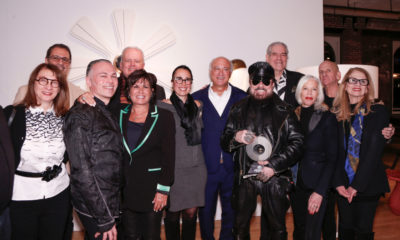The Milan-based Prada Group opened its newest store over the weekend, a multi-level, 24,000-square-foot showplace on Broadway and Prince Street in New York's SoHo neighborhood, designed by world-renowned architect Rem Koolhaas. As celebrities from the worlds of fashion, politics and entertainment gathered for the opening-night party, The New York Times called the store “a model block of intelligent optimism about urban life . . . a museum show on indefinite display.”
Today, The Times worried that the reported $40 million spent to open such a showplace (plus another Koolhaas-designed emporium soon to open in San Francisco) might have been imprudent for a company grappling with a debt load of $1.6 billion. The market for high-end luxury goods is thinning in a difficult economy; Prada has purchased a lot of prime real estate at market peaks; an initial public offering the company was considering has been called off twice this year (most recently after September 11); in November, the company had to sell a 25.5 percent stake in one of its more recent acquisitions, Fendi, to LVMH Moet Hennessey Louis Vuitton for $260 million; the company has also been reportedly shopping two other of its acquired labels, Jil Sander and Helmut Lang; and two days before it opened its SoHo store, Prada announced a $624 million bond to help offset some of its debt.
The Prada Group — officially known in Italy as I Pellettieri d'Italia S.p.A. — also includes Church's shoes, Azzedine Alaia, Carshoe and the Genny Group, plus Fendi, Sander and Lang.
Prada now has 150 stores around the world, five in New York alone. All five Manhattan stores are within two and a half miles of one another (though it did close a Prada sports store on nearby Wooster Street a week before the Prince Street opening). Though Prada Group ceo Patrizio Bertelli insists that “we don't feel we're overexposed,” some retail analysts aren't so sure. One told The Times she felt the creation of elaborate retail stores is “high risk/high reward – or no reward. Successful retail strategies go back to germane, relevant, must-have products.” And as a purveyor of “must-have products” among the fashionista, Prada might have been concerned that a recent Women's Wear Daily survey to identify the 100 most recognizable international fashion brands named Calvin Klein, Gucci, Christian Dior, Chanel and Givenchy among others, but not Prada.

 Photo Gallery6 days ago
Photo Gallery6 days ago
 Headlines2 weeks ago
Headlines2 weeks ago
 Headlines6 days ago
Headlines6 days ago
 Headlines1 week ago
Headlines1 week ago
 Headlines2 weeks ago
Headlines2 weeks ago
 Headlines7 days ago
Headlines7 days ago
 Designer Dozen2 weeks ago
Designer Dozen2 weeks ago
 Special Reports2 weeks ago
Special Reports2 weeks ago














